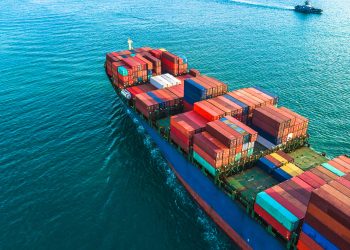The Chinese Ministry of Transport informed that dry bulk and container shipping along the country’s coast are experiencing too much capacity, which may lead to reduced rates. As of now, China’s coastal shipping market is stable, but due to increasing issues with over-capacity, it is possible that this stability will change.
Growth rates for the domestic maritime transport of coal, ore and grain have shown signs of slowing down, while shipping capacity has increased. Namely, shipping capacity in China’s domestic dry bulk trades rose by 13.1% year-over-year. Now, the Ministry anticipates that the demand for dry bulk transport will slow down, while at the same time a number of vessels will be entering the market.
[smlsubform prepend=”GET THE SAFETY4SEA IN YOUR INBOX!” showname=false emailtxt=”” emailholder=”Enter your email address” showsubmit=true submittxt=”Submit” jsthanks=false thankyou=”Thank you for subscribing to our mailing list”]
Regarding the demand for coastal oil tanker transport, it declined as capacity increased. The market felt the impact of the overhaul of marine oil terminals and the suspension of production in some refineries. In fact, volumes of oil cargoes were less by 7% year-over-year, standing at 70. 4 million tons.
In 2019, the total demand for coastal oil transport in China is expect to fall because of a decline in the number of oil fields and the construction of domestic oil pipelines. In addition, despite the fact that domestic oil production could grow, the supply of vessel capacity is considered a ‘generally sufficient.’
Moreover, demand for bulk liquid chemical transport is stable,as capacity has a slight surplus and the freight rate is also stable. China said that its chemical production and consumption is currently at a period of ‘low growth.’ Namely, coastal transport of liquid chemicals achieved 26.8 million tons, which marks an increase of 3.1%.
Furthermore, China’s LNG carrier market saw an increased demand in 2018, and was considered balanced, as by the end of 2018 there were 72 coastal LNG carriers, which had a total deadweight of 247,900 metric tons.
Continuing, the Chinese Ministry of Transport said that the country’s carried LNG volumes in 2018 did not change since. At the same time, the capacity for the carriage of gases such as propylene and ethylene were slightly tight.
Commenting about 2019, China mentioned that because of the commissioning of big petrochemical base projects, the demand for bulk liquid chemical and LNG transport carriage has risen. However, growth rate is limited, while ship capacity is expected to grow.
Finally, China’s domestic box shipping industry received a large amount of extra capacity, which made freight rates fall. Specifically, during 2018 China’s domestic coastal box traffic grew by just under 8% percent. By the end of last year, there was a total of 252 vessels, with the number of boxes that were carried increasing by 18.3%. What is more, demand for the carriage of cargoes is still strong, but due to the introduction of new ships, the capacity has become less.
Analyzing the predictions for 2019, China’s Ministry of Transport expects a growth in coastal box shipping trade, driven by an increase in the containerization rate. According to sources, this will partially absorb excess ship capacity. In spite of this however, China warns that excess capacity from the international box shipping trades could be redeployed into the domestic market.





























































